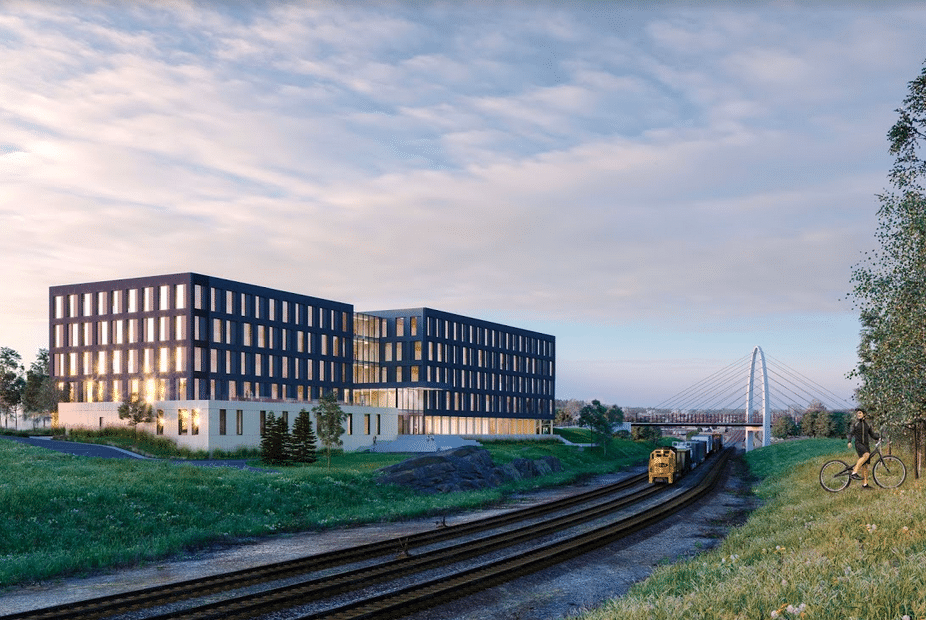Avista Utilities and the construction engineering company McKinstry are testing a series of solar-plus-storage solutions, active energy management techniques and smart building technologies at a Spokane, Washington-based eco-district that the partners say will be home to the smartest five blocks in the world.
The South Landing Eco District will play an important role in helping Avista achieve its clean electricity goals by 2045, but the ultimate goal is larger. “This is about supporting an efficient optimization of the grid,” Nick Edney, senior electrical engineer at McKinstry said.
“In the renewable energy space, it’s never a one-size-fits all… We are looking at the energy system comprehensively and thinking holistically,” said Jeff Hughes, McKinstry’s director of renewable energy. The partners also plan to leverage the research and development team work so that they can learn about the system, he added.
The overarching aim, however, is to develop scalable innovations that can be replicated, even when retrofitting buildings, said Heather Rosentrater, senior vice president for energy delivery and shared services at Avista.
“[The district’s] active energy sharing system will give Avista an opportunity to test progress and pass on the innovations and savings system-wide and with the building owners [while] meeting their needs,” Rosentrater said. “We want to help companies move to clean energy systems in the most affordable way possible,” she added.
To achieve maximum efficiency and sustainability, the eco-district will operate on a shared energy management model in which the energy needs – heating, cooling and electricity – for multiple buildings in the complex will be coordinated through a central energy plant located at the district’s Scott Morris Center for Energy Innovation (SMC).
Through the system, waste heat will be captured and transferred to serve heating needs within the district, and solar arrays will be used to offset the district’s central energy plant’s load. Excess solar generation will be dispatched to the district’s other buildings and either stored in battery storage systems, converted to thermal energy and stored in thermal storage tanks, and/or exported to the grid. “There is a strong incentive to balance load and generation by self-consuming or storing as much PV generation [within the district] as possible,” Edney said. Rooftop installations on the Catalyst Building and the SMC will generate 277 kW of solar power.
DC collection architecture
The Catalyst Building and the SMC building’s solar arrays were designed with a DC collection architecture. “[This] means the DC energy is brought from the rooftops to the centralized energy plant at the SMC to serve multiple buildings on a real-time basis,” Hughes said.
To maximize density, different tilt angles and racking configurations were used for each roof, Hughes said. Also, smart module level power electronics technology will be used to allow for longer strings and to optimize energy yield at the module level, he added. “A traditional commercial rooftop system utilizes string inverters serving just one facility. We believe our neighborhood energy concept is a smart and more comprehensive renewable energy solution,” he said.
When it opens later this year, the district’s five-story Catalyst Building, which will be made out of cross-laminated timber, will have 159,000 rentable square feet. The SMC will have 40,000 rentable square feet. The partners plan to find like-minded tenants that are interested in collaborating with computer science, electrical engineering, visual communication and design students from Eastern Washington University’s (EWU). Some EWU classes will be held in the Catalyst building.
According to Avista and McKinstry, the eco-district’s Catalyst Building and SMC will showcase innovations that other companies can consider deploying as they try to meet their clean energy targets. The partners think the project will shine a light on what is possible when utilities and developers work together on energy efficiency, building design and lease arrangements.
This content is protected by copyright and may not be reused. If you want to cooperate with us and would like to reuse some of our content, please contact: editors@pv-magazine.com.








By submitting this form you agree to pv magazine using your data for the purposes of publishing your comment.
Your personal data will only be disclosed or otherwise transmitted to third parties for the purposes of spam filtering or if this is necessary for technical maintenance of the website. Any other transfer to third parties will not take place unless this is justified on the basis of applicable data protection regulations or if pv magazine is legally obliged to do so.
You may revoke this consent at any time with effect for the future, in which case your personal data will be deleted immediately. Otherwise, your data will be deleted if pv magazine has processed your request or the purpose of data storage is fulfilled.
Further information on data privacy can be found in our Data Protection Policy.